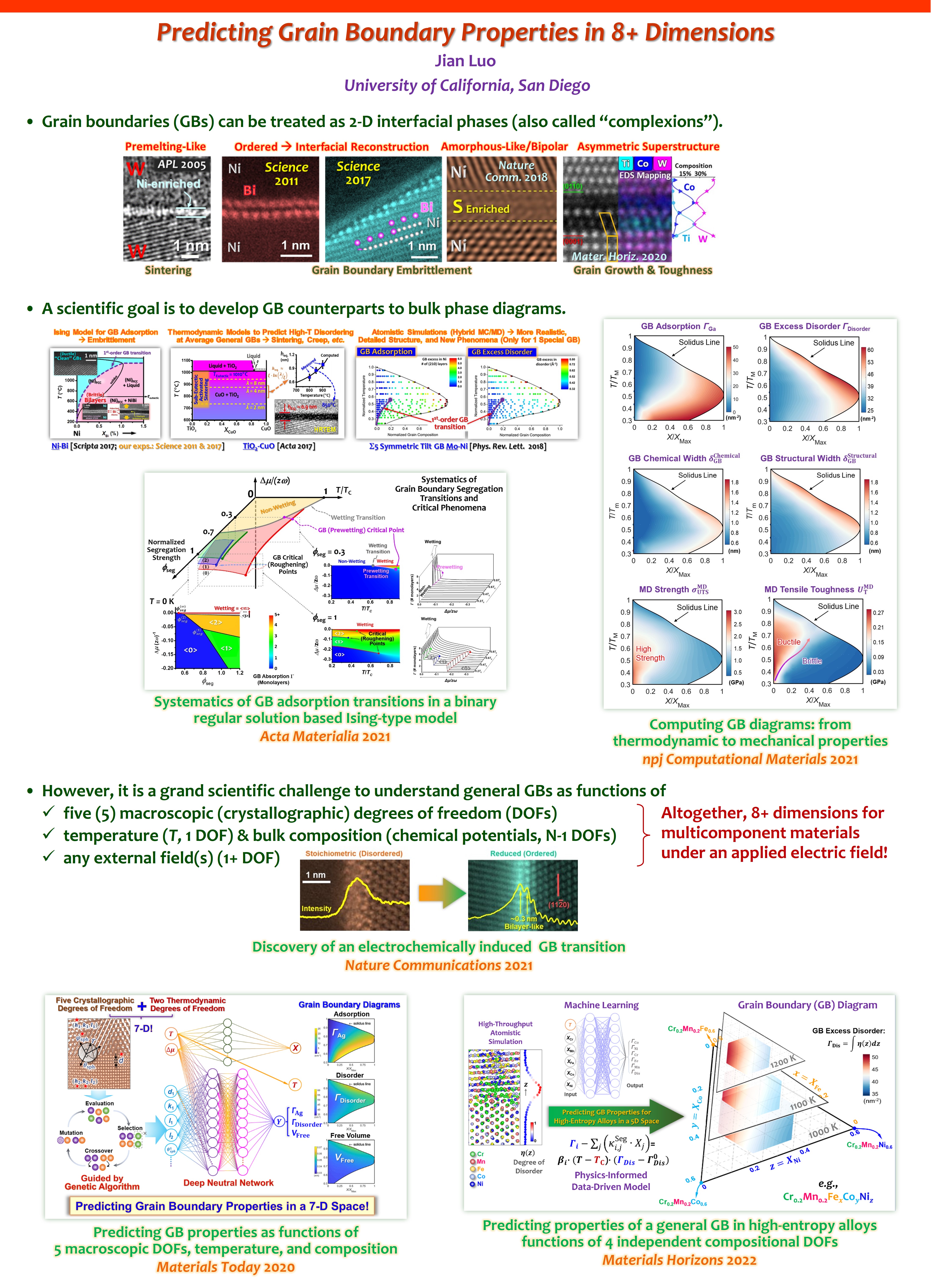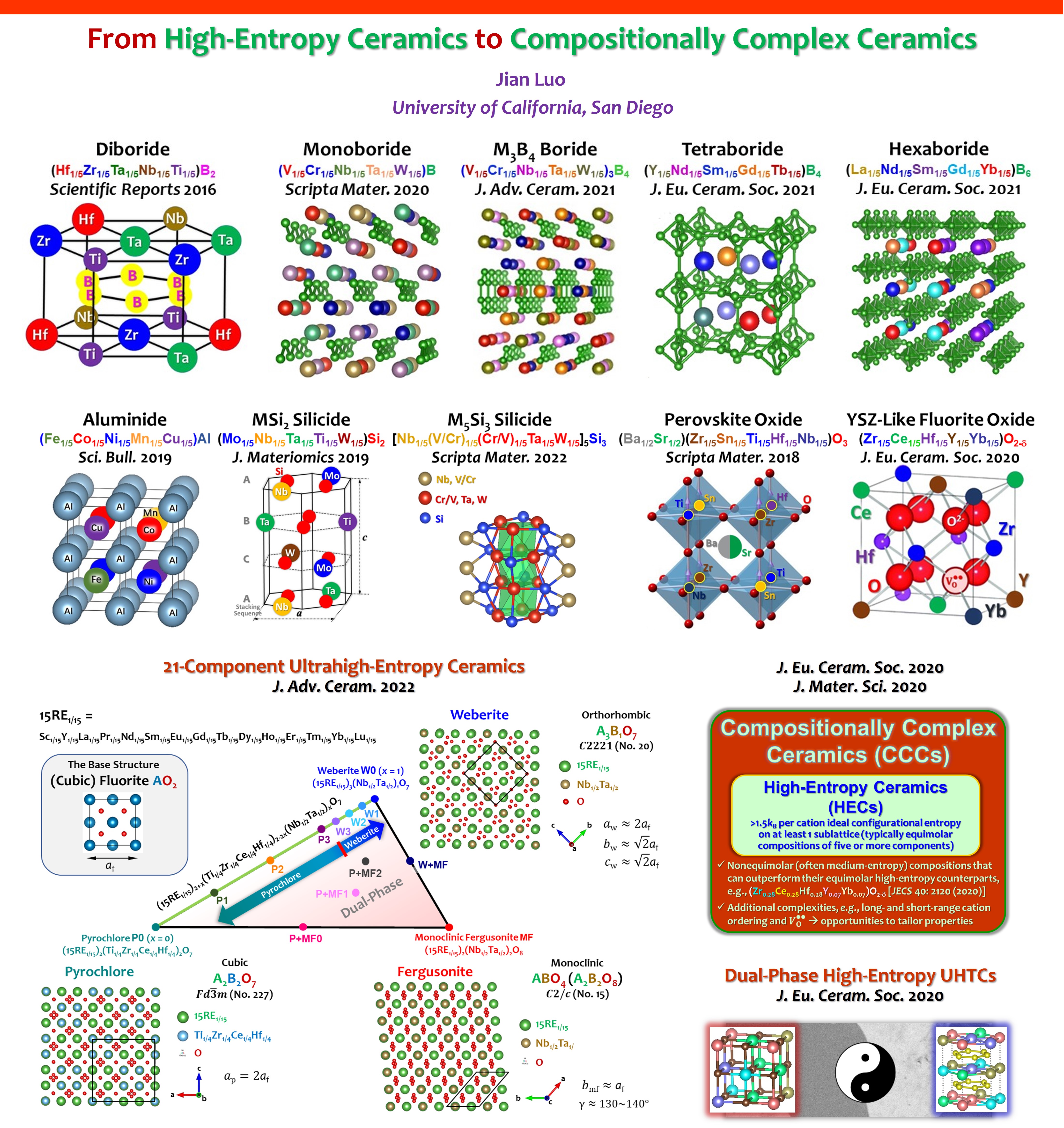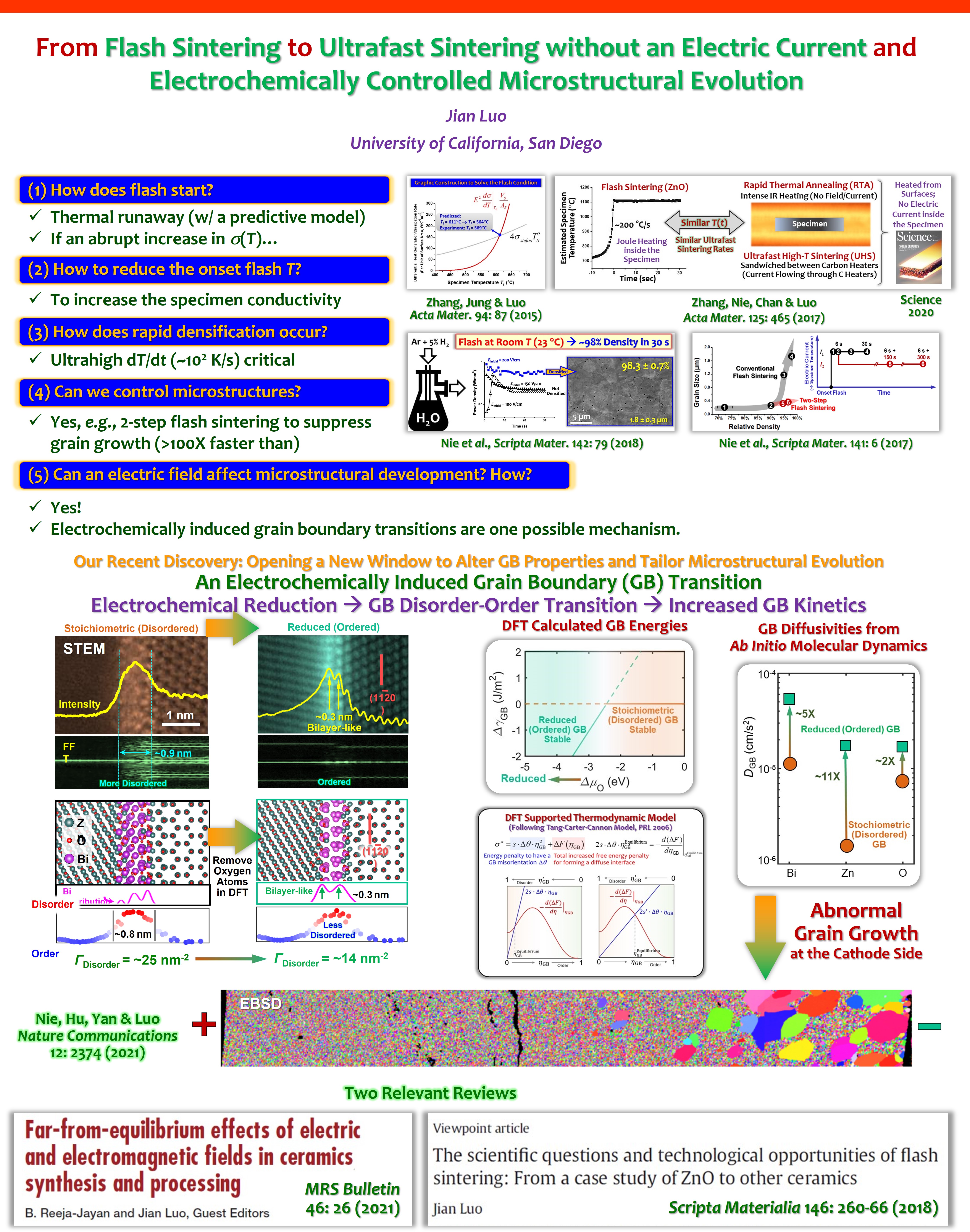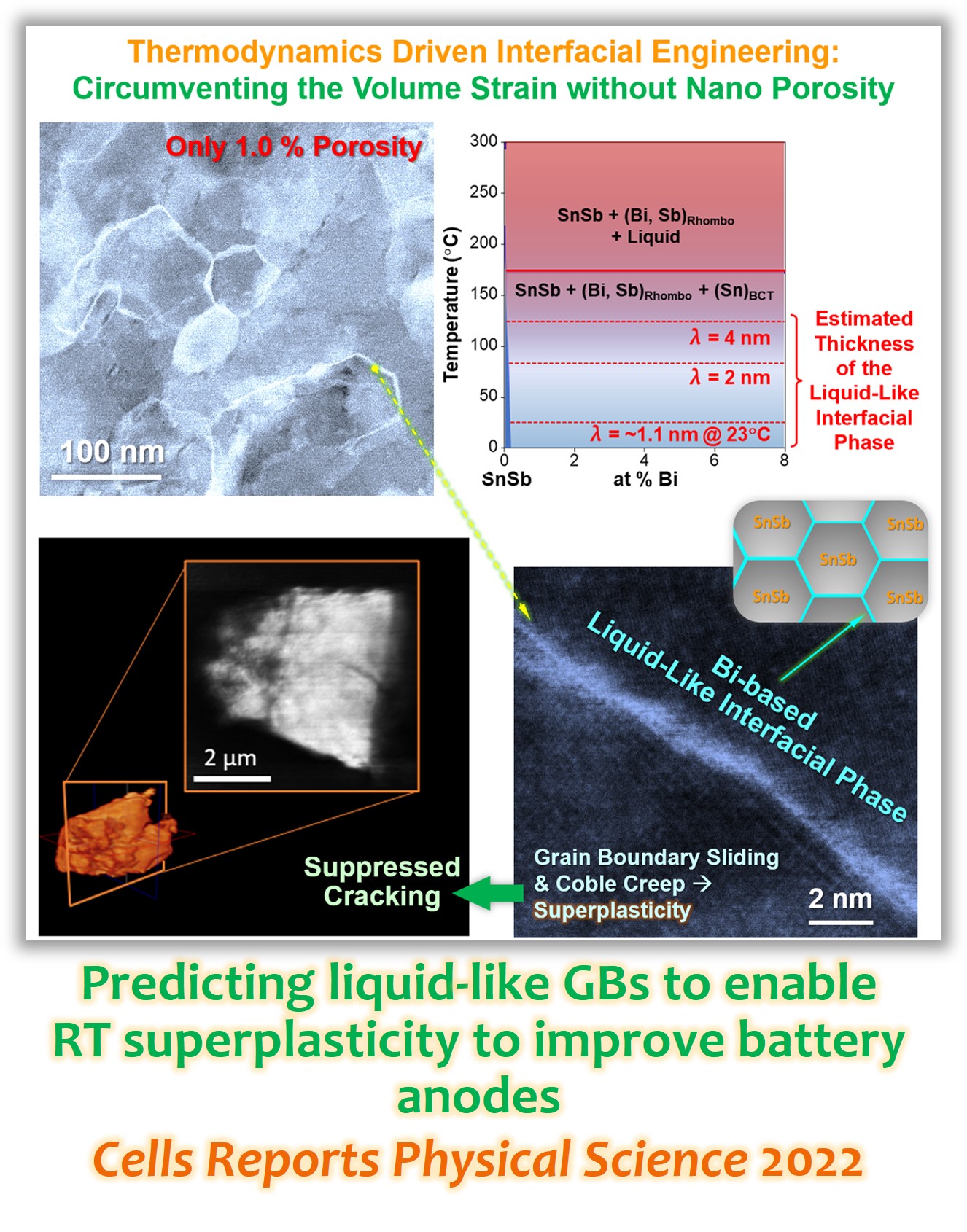Home | Research | Publications | Faculty Profile
Luo Group's Research
Selected Research Highlights (01/28/2022)








Home | Research | Publications | Faculty Profile |
Luo Group's Research |
Earlier Research Highlights(2018 or Earlier)
A series of discrete grain boundary (GB) 2-D interfacial phases (also designated as “complexion”) has been identified in doped alumina [Dillon and Harmer, Acta Mater. 2007] and subsequently other materials. They can be utilized to control sintering, microstructures, and materials properties, offering a revolutionary method for achieving predictive fabrication of materials by design. This figure is adapted from a prior report in Science 333: 1730 (2011). There are more details (e.g., in the bilayers in Ni-Bi)...
Science 358: 97 (2017) UCSD News Release
Development of Interfacial "Phase" (Complexion) Diagrams
A Few Examples:
Physical Review Letters 120, 085702 (2018)
Physical Review Letters 120: 085702 (2018) Acta Materialia 130: 329 (2017)
Scripta Materialia 130: 165 (2017)
(a) A computed GB λ-diagram for Ni-doped Mo has been validated by a systematic comparison with (b) measured GB diffusivities. This figure is adapted from an “Editors’ Suggestion” in Phys. Rev. B [84: 014105 (2011)]. (According to the PRB: “As a service to both our readers and authors, we list a small number of papers published in Physical Review B that the editors and referees find of particular interest, importance, or clarity.”)
A counterintuitive phenomenon of decreasing GB diffusivity with increasing temperature predicted by (a) a computed λ-diagram was (b) corroborated experimentally. This phenomenon stems from the retrograde solidus line of the Mo-Ni system. Specifically, for a single-phase alloy of Mo + 0.5% Ni, increasing the temperature from 1200 °C to 1500 °C results in an increasing distance to the solidus line and a greater free-energy penalty for forming liquid-like GBs; thus, the general GBs become “drier” with decreasing diffusivities. Figure adapted from Phys. Rev. Lett. 105: 236102 (2010) Batteries, Solid Electrolytes and Supercapacitors
ACS Applied Materials & Interfaces 9: 36745 (2017) Physical Chemistry Chemical Physics 16: 7786 (2014) Journal of Power Sources 245: 594 (2014)
Nature Communications 6, 8354 (2015) ACS Applied Materials & Interfaces 8: 12871 (2016) High-Entropy Ceramics
Scientific Reports 6: 37946 (2016)
Scripta Materialia 142: 116-120 (2018) High-Temperature Nanoalloys
Scripta Materialia 124: 160 (2016) Flash Sintering
Viewpoint: Scripta Materialia, 146: 260 (2018) Water-Assisted Flash Sintering (WAFS)
Scripta Materialia, 142: 79 (2018); Also see ACerS News Two-Step Flash Sintering (TSFS)
Scripta Materialia, 141: 6 (2017) |
||||